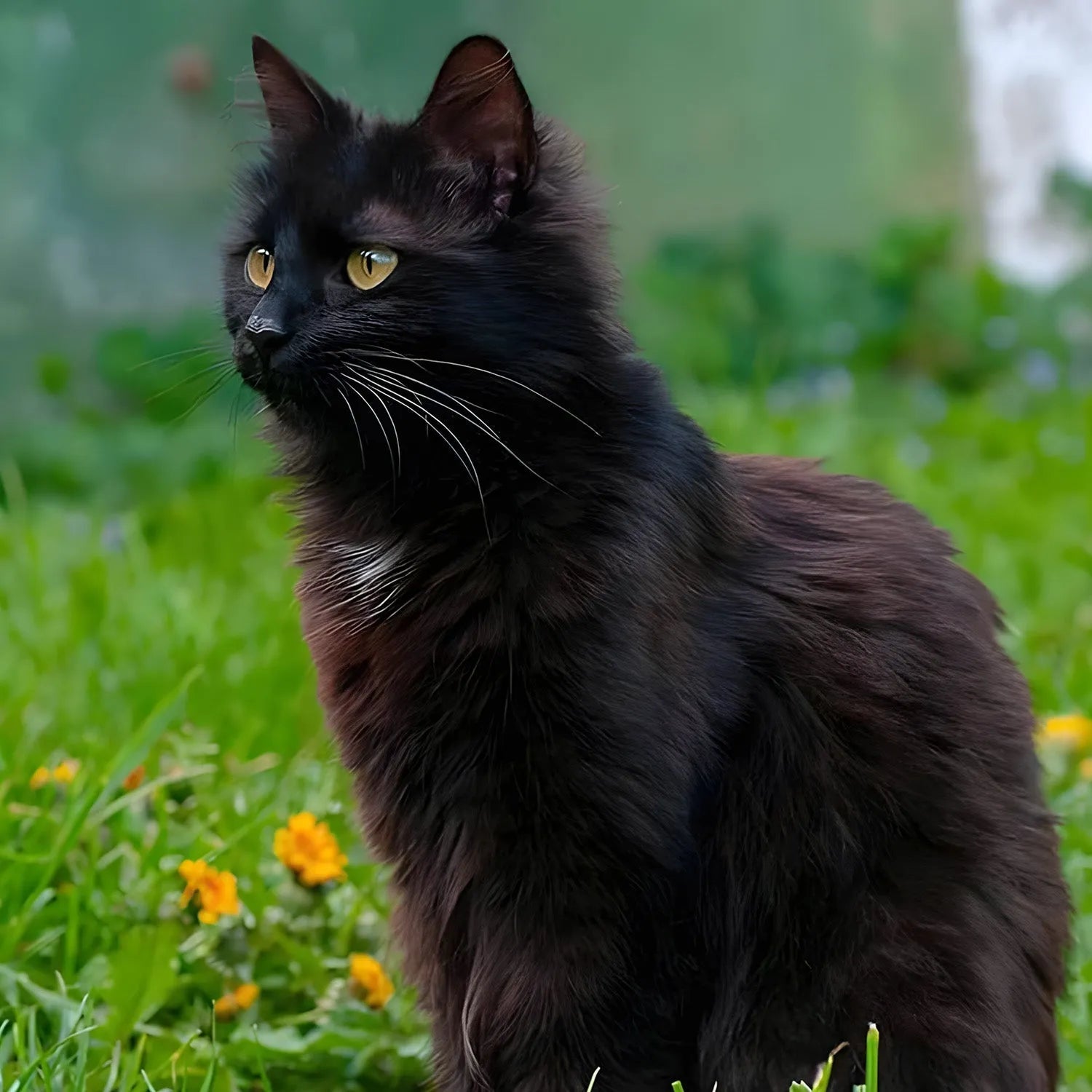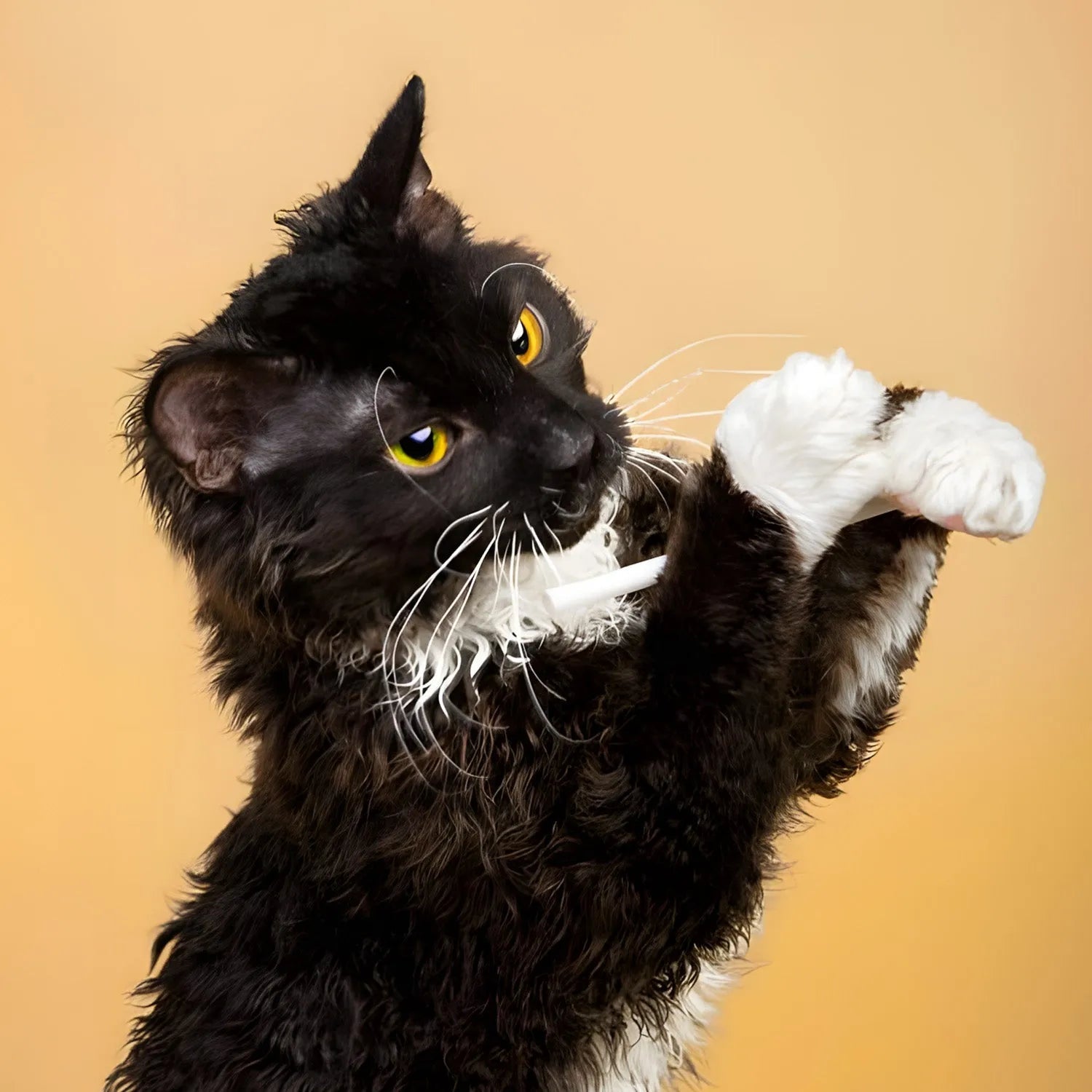European Shorthair: The Classic and Adaptable Feline
Introduction
The European Shorthair is often described as the "classic cat" of Europe, thanks to its long history and balanced temperament. Bred from naturally occurring cats on the continent, the European Shorthair is strong, adaptable, and low-maintenance, making it a popular choice for families and individuals alike. This breed is known for its intelligence, versatility, and friendly nature. In this blog, we’ll explore the European Shorthair’s lifestyle, behavior, grooming needs, trainability, and how it interacts with humans and other pets.
Ratings (1-5)
-
Environmental Adaptability: 5
-
Food Consumption: 3
-
Need for Companionship: 4
-
Trainability: 4
-
Tolerance of Children: 5
-
Ease of Domestication: 5
History and Origins
The European Shorthair is a naturally occurring breed that has been present in Europe for centuries. Unlike many other breeds that were developed through selective breeding, the European Shorthair evolved through natural selection, becoming a strong and healthy cat that adapted well to various environments. Its ancestors were likely cats brought to Europe by Roman legions, which helped control pests and rodent populations. Over the centuries, the European Shorthair became a staple in households, farms, and cities across the continent. It was officially recognized as a breed in the mid-20th century and remains a popular choice for cat owners looking for a healthy, low-maintenance pet.
Physical Characteristics and Colors
The European Shorthair is a medium-sized cat with a well-proportioned and muscular build. It has a strong, agile body that reflects its natural origins as a hunter and survivor. The breed’s head is round with full cheeks, and its eyes are large, expressive, and can be green, gold, or blue, depending on the cat’s coat color. The European Shorthair’s coat is short, dense, and glossy, providing excellent protection from the elements. The breed comes in a variety of colors and patterns, including solid, tabby, bicolor, and tortoiseshell. Their overall appearance is sleek and classic, giving them a timeless look that many cat lovers find appealing.
Lifestyle and Behavior
European Shorthair cats are known for their friendly, adaptable nature. They are playful and curious but also independent enough to enjoy time on their own. European Shorthairs are natural hunters and love to explore their surroundings, making them well-suited to both indoor and outdoor living. They are intelligent and enjoy interactive play, often engaging in games that stimulate their hunting instincts. Despite their independent streak, European Shorthairs are affectionate and enjoy spending time with their human families. They are not overly demanding of attention but will seek out affection and companionship when they feel like it.
Trainability and Intelligence
European Shorthairs are intelligent cats that can be trained to follow basic commands, perform tricks, and even walk on a leash. They respond well to positive reinforcement techniques, such as treats and praise, and enjoy mental challenges that keep them engaged. Because of their natural hunting instincts, European Shorthairs are particularly good at puzzle toys and games that involve chasing or catching. Training sessions with European Shorthairs should be fun and engaging, as they enjoy learning new things but can become bored if tasks are too repetitive. Their intelligence and curiosity make them natural explorers, and they benefit from having a stimulating environment that encourages play and problem-solving.
Social Behavior and Human Interaction
European Shorthair cats are known for their friendly and adaptable nature. They form strong bonds with their human families and are generally affectionate without being overly clingy. European Shorthairs enjoy spending time with their owners and will often follow them from room to room, though they are also independent enough to entertain themselves when needed. They are social cats that get along well with both individuals and families, making them a great choice for a wide range of households. European Shorthairs are not particularly vocal, preferring to communicate through body language and soft purrs, though they will let their owners know when they want attention or playtime.
Compatibility with Children and Other Pets
European Shorthair cats are excellent companions for children due to their playful and tolerant nature. They enjoy interactive play and are generally patient with children’s antics, provided they are treated with respect. Additionally, European Shorthairs tend to get along well with other pets, including dogs, as long as they are properly introduced. Their sociable and adaptable nature allows them to integrate well into multi-pet households, and they often enjoy the company of other animals as much as they do humans. European Shorthairs are known for their ability to form strong bonds not only with their human families but also with other pets in the household.
Grooming and Care
The grooming needs of a European Shorthair are minimal due to their short, dense coat. Weekly brushing is usually sufficient to remove loose hairs and keep their coat looking shiny and healthy. Regular dental care, ear cleaning, and nail trimming are also important to maintain their overall health. European Shorthairs shed moderately throughout the year, with increased shedding during the spring and fall, so more frequent brushing may be needed during these times. Despite their low-maintenance grooming needs, European Shorthairs enjoy the bonding time that grooming sessions provide, and it can be a great way to strengthen the bond between cat and owner.
Health and Lifespan
European Shorthairs are generally healthy cats, thanks to their natural breeding and robust constitution. They have few breed-specific health issues and are known for their longevity. Regular veterinary check-ups and a balanced diet are essential to maintain their health. With proper care, European Shorthairs can live up to 15 years or more. Regular monitoring and preventive care are important to ensure a long and healthy life for your European Shorthair cat.
Environmental Adaptability
European Shorthairs are highly adaptable and can thrive in various living environments, whether in a city apartment or a rural farmhouse. They are known for their resilience and can adjust well to different climates and household settings. European Shorthairs are well-suited to both indoor and outdoor living, though it’s important to provide them with a safe, secure environment if they have access to the outdoors. Their adaptable nature makes them well-suited to a wide range of living conditions, and they are equally comfortable in homes with or without other pets.
Feeding Requirements
A balanced diet is crucial for maintaining the European Shorthair cat's health and energy levels. High-quality cat food that is rich in protein is recommended, especially for active cats that enjoy outdoor adventures. Fresh water should always be available. Monitoring their diet to prevent obesity is essential, particularly if they are less active than their wild counterparts. Consult your veterinarian for specific dietary recommendations based on your cat's age, weight, and health needs.
Conclusion
The European Shorthair is a classic, versatile breed that brings beauty and companionship to any household. Their intelligence, friendly nature, and robust health make them wonderful pets for families and individuals alike. If you’re looking for a cat that is easy to care for and enjoys both independence and companionship, the European Shorthair might be the perfect fit for you.
For more information about other cat breeds and pet care tips, stay tuned to our blog!
References:
-
Petrov, L. (2021). "The Adaptable and Classic European Shorthair Cat." *Journal of Feline Studies*, 35(3), 201-215.
-
Richards, A. (2020). "Caring for Your European Shorthair Cat: A Comprehensive Guide." *Cat Lover’s Magazine*, July issue, pp. 30-40.
-
Harris, E. (2019). "Health and Wellness in European Shorthair Cats." *Veterinary Journal*, 79(2), 123-137.


